Product labels are everywhere. They help us make choices in all kinds of retail environments. Successful labels do more than inform. They serve as silent salespeople, making the last sales pitch before a purchase. While labels communicate the brand’s name, product description, and ingredients – there is more that goes into them.
A well-crafted product label acts as a key to informed decision-making for consumers. It enables them to understand the product better and adhere to necessary precautions. Most importantly it helps them easily recognize the brand at the point of purchase.
Designing effective product labels involves a careful balance of creativity and functionality. An impactful design can grab the attention on the shelves. Bold colors. Attractive fonts. Eye-catching graphics that reflect the brand identity. It is also important to ensure that the label provides essential and mandatory information. This includes product name, ingredients, usage instructions, and any relevant certifications or warnings.
Product Label Elements to Consider
Companies have the opportunity to improve their impact by including extra elements on their labels. These additional components can provide crucial information to consumers and enhance the overall appeal of the product. Here are some extra elements that companies may consider to help stand out among the rest.
- Certifications and Awards: Adding logos or symbols indicating certifications or awards can help establish trust and credibility among consumers. For example, the USDA Organic Seal, visually reassures customers about product qualities. Typically, these stamps come from recognized third-party specialists in the field.
- Sustainable Packaging: With growing environmental concerns, including information about sustainable packaging materials can resonate with eco-conscious customers.
- Usage Instructions: Clear and concise usage instructions can optimize customer experience, ensuring that the product is used correctly and safely.
- QR Codes: Incorporating QR codes on product labels can lead consumers to additional information or promotional content, enhancing their engagement with the brand.
- Ingredients Benefits: Highlighting the benefits and advantages of key ingredients can sway consumers in their purchasing decision.
- Social Media Handles: Including social media handles on product labels encourages customers to engage with the brand online and stay updated with the latest news and promotions.
The purpose of these extra elements is to provide consumers with comprehensive and relevant information. While required information like ingredients, net weight, and expiration dates are essential, incorporating additional elements can enhance the product’s image, strengthen consumer trust, and improve overall impact.
A Look Back at Past Label Trends
Over the years, label design has experienced significant transformations. In the past, labels were primarily focused on providing essential product information in a straightforward manner. However, as consumers became more discerning and design-savvy, labels evolved to become an integral part of a product’s overall branding and marketing strategy.
One significant trend that emerged in recent years was the shift toward minimalist design. This design approach gained popularity due to its clean lines, simple typography, and focus on clear messaging. Consumers were drawn to the sleek and modern aesthetic that minimalist labels offered, allowing products to stand out in an overcrowded marketplace.
Another notable trend in label design has been the rise of sustainable packaging and eco-friendly labels. As consumers become more eco-conscious, brands responded by using recyclable materials and opting for minimalist, earth-friendly designs to convey their commitment to sustainability.
Now, you often see labels incorporating storytelling elements, allowing consumers to connect with the brand on a deeper level. Labels became a canvas for brands to share their unique stories, values, and the inspiration behind their products. This shift adds a personal touch and creates a stronger emotional connection between consumers and the products they purchased.
To achieve this, consider incorporating elements into the label that reflect the brand’s origins, values, or craftsmanship, turning the product into a piece of a larger story.
Crafting a Narrative Through Label Design
The story behind a product can be a powerful differentiator in a congested crowded market. Effective label design goes beyond aesthetics, embodying the essence of the brand and its journey.
The choice of materials, the finesse in typography, and the harmony of colors all play crucial roles in storytelling. For example, sustainable materials can tell a tale of environmental stewardship, reflecting a brand’s commitment to preserving the planet. Similarly, the careful selection of typography and color can evoke specific eras or cultural references, transporting consumers to different times and places and invoking a sense of nostalgia or aspiration.
Plus, the narrative power of labels can be leveraged to communicate the brand’s values, mission, and vision at a glance. This can create a sense of community and belonging among consumers who share these values, transforming them from passive purchasers into active brand advocates.
Color Theory
Color plays a significant role in label design as it evokes emotions and associations. For example, labels with vibrant colors may convey a sense of energy and excitement, while labels with muted tones may suggest elegance and sophistication. Texture, whether through glossy finishes or embossed lettering, can communicate the quality and luxury of a product. Imagery on labels, such as photographs or illustrations, can create associations with specific lifestyles or evoke nostalgia.
Clarity in Typography
Opt for typography that ensures clarity across all viewing contexts. A font that is easy to decipher, regardless of size or distance, facilitates quick absorption of key product details by shoppers. It’s about guaranteeing that, whether up close or from afar, your product’s messaging remains accessible and understandable, helping to cut through the clutter of a crowded marketplace.
Combining Simplicity with Distinctiveness
Achieving the right mix of simplicity and distinctiveness is critical in the branding arena. Too simple, and your product fades into the background; too complex, and you risk alienating your audience. The goal is to craft a visual identity that is both memorable and approachable, ensuring your product not only grabs attention but also remains top of mind for consumers. This balance aids in creating a brand that stands out for its visual appeal and ease of recognition.
Cohesive Branding
Maintaining consistent branding across your product range is crucial for cementing brand identity and enhancing recognition. Employ a uniform color palette, typography, and logo placement to weave a coherent brand identity across all touch points. This strategy not only strengthens brand recall but also fortifies the consumer’s connection to your brand, much like how Starbucks’ iconic green and white motif instantly signifies the coffee giant’s presence.
Prioritizing Sustainability
With growing consumer emphasis on environmental responsibility, integrating sustainable practices into your product packaging can significantly bolster your brand’s appeal. Highlighting the use of recycled materials on your labels signals to eco-conscious shoppers your commitment to sustainability. This approach not only aligns with modern values but also sets your brand apart as a forward-thinking, responsible choice in a overflowing marketplace.
Mastering Visual Hierarchy
Effective label design employs visual hierarchy to guide consumer attention through the information presented. By manipulating font size, placement, and color contrast, designers can highlight key product features and facilitate an intuitive understanding of the product’s value proposition. This method ensures consumers can swiftly discern the most pertinent information, aiding in their decision-making process.
Innovative Materials
Label design is constantly evolving, with new materials that add both beauty and functionality to products. Metalized films, for example, give labels a shiny, modern look that catches the eye and can make any product stand out on a shelf.
For products that need a bit of extra durability without sacrificing style, specialty laminates are perfect. They protect labels from damage while adding interesting textures or a glossy finish that makes the design pop.
Holographic films are another exciting option, offering a 3D effect that makes labels look futuristic and highly attractive. These and other special materials like fluorescent and metallized filmsdraw attention and can make products more appealing to customers.
Choosing the right material for your label is key to making your product stand out. With the right combination of materials, you can create labels that are not just informative but also interesting, drawing in consumers with their design and texture.
Final Thoughts
Through deliberate design efforts, businesses have the opportunity to leverage their labels not just to inform and captivate but also to forge meaningful connections, driving success in a marketplace that’s always changing.
Partnering with an expert label supplier significantly enhances this process. With their help in choosing the right materials, employing the best printing techniques, and navigating regulatory landscapes, a trusted supplier becomes an invaluable guide. This collaboration enables the creation of labels that strike the perfect balance between aesthetic allure and crucial information dissemination. By aligning with a supplier attuned to the nuances of impactful labeling, brands can amplify their visibility and communicate more effectively with their audience, paving the way for heightened brand engagement and loyalty. Grow your brand and your business with high-quality product labels. Contact us today.


